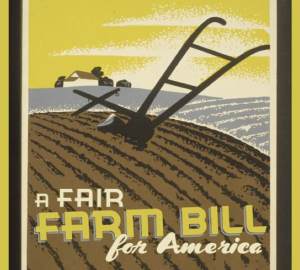IMMEDIATE RELEASE: May 29th 2008
CONTACT: Holly Freishtat, 360-391-2888, holly@cultivatehealth.com
Seattle Hospitals Purchasing Local, Sustainable Food: National Report Outlines Leading Trends in Health Care Sector
127 Hospitals nationwide are buying healthier food to promote public health
(5/29/08 – Seattle, WA)
For 127 hospitals across the United States, the words “hospital food” and “healthy communities, healthy environment” are one and the same, according to a new report released by Health Care Without Harm (HCWH) today. The Healthy Food in Health Care Report outlines concrete steps being taken by hospitals regionally that support the national trend to change their food buying practices towards more sustainably produced, healthier choices for patients, staff and visitors.
Eight Seattle area hospitals out of the 127 facilities, in 21 states across the country, pledged to source local, nutritional, sustainable food. “When hospitals sign and implement the Healthy Food in Healthcare Pledge they redefine healthy food beyond nutrition to include community and environmental health. Hospitals are changing the culture of food in healthcare by sourcing local produce, hormone-free milk, meat without hormones or antibiotics, sustainable seafood and through hosting farmers’ markets, community- supported agriculture boxes for employees,” says Holly Freishtat, Sustainable Food Specialist for Washington Physicians for Social Responsibility (WPSR), a member organization of HCWH.
The Healthy Food in Health Care Pledge outlines the steps to be taken by the health care industry to improve the health of their patients, local communities and the environment. This Pledge Report details the concrete food purchasing steps these facilities are making. For example:
· 80 facilities (70%) are purchasing up to 40% of their produce locally
· Over 90 facilities (80%) are purchasing rBGH-free milk
· 100% have increased fresh fruit and vegetable offerings
· 50 facilities (44%) are purchasing meat produced without the use of hormones or antibiotics
· 63 facilities (60%) are composting food waste
Seattle area hospitals have been leaders in the movement of providing healthy sustainable food. The eight hospitals that have signed the Healthy Food in Healthcare Pledge are; Seattle Children’s Hospital and Regional Medical Center, Overlake Hospital Medical Center, Northwest Hospital and Medical Center, University of Washington Medical Center and MultiCare Health System that includes Good Samaritan Hospital, Tacoma General Hospital, Mary Bridge Children’s and Health Center, and Allenmore Hospital. Each of the facilities is implementing their Pledge commitments in various ways. They are rolling out new patient menus featuring healthier selections, purchasing locally grown produce when possible, and increasing the amount of organic sustainable foods. A few highlights include:
- Food Composting: Four hospitals composted a total of 310 tons of food compost in 2007, two more hospitals are planning to compost by the end of 2008
- Farm Stand and/or CSA: three hospitals have a farm stand and/or a CSA, thus increasing the access of organic fruit and vegetables to over 14,000 employees
- Nutritional Quality: All the hospitals are decreasing the amount of processed foods and Transfats while increasing whole grains and fruits and vegetables
Hospitals around the country are linking their operations to impacts on human and environmental health, and an emerging part of this trend is increased attention to food service. Health Care Without Harm (HCWH) is joined in its work to encourage support for local, sustainable food by major medical associations. In 2007, the American Public Health Association recognized the urgency of transforming our food system and passed a policy to promote environmental sustainability, improve nutritional health and ensure social justice. That same year, the California Medical Association passed a resolution that encourages hospitals to adopt policies that increase the purchasing and serving of local, sustainable food .
“When hospitals serve and promote nutritious, local, sustainably grown food to patients, families, staff and visitors, hospitals are modeling preventive medicine,” stated Sue Heffernan, RN, MN, Clinical Nurse Specialist at Seattle Children’s Hospital. Across the country, pledged hospitals are continuously working to address the public and environmental health impacts from current industrialized food production practices by sourcing nutritious, local sustainable food.
For more information and expert list please contact:
Holly Freishtat, WPSR Sustainable Food Specialist, Food & Society Fellow
360-391-2888, holly@cultivatehealth.com
Heath Care without Harm, an international coalition of more than 473 organizations in 52 countries, is working to transform the health care sector, without compromising patient safety or care, so that it is ecologically sustainable and no longer a source of harm to public health and the environment. For more information on the healthy food pledge seehttp://www.noharm.org/us/food/pledge.
To learn more about HCWH’s work on food and other issues related to health care www.healthyfoodinhealthcare.org
To view the Healthy Food in Healthcare Pledge Report:
The 2007 California Medical Association resolution encourages hospitals to adopt policies and implement practices that increase the purchasing and serving of food that promotes health and prevents disease. Included are meat and dairy products produced without non-therapeutic antibiotics, meats derived from non-CAFO sources such as free-range animals, food grown on non-industrial agricultural operations such as small and medium-sized local farms, and food grown according to organic or other methods that emphasize renewable resources, ecological.
The 2007 American Public Health Association policy “Towards a Healthy, Sustainable Food System” urges support of environmentally sound agricultural practices to reduce contamination, resource use, climate change, in addition to improved food labeling for country-of-origin and genetic modification, and a ban on non-therapeutic antimicrobial and arsenic use. It recognizes the urgency of transforming our food system to promote environmental sustainability, improve nutritional health, and ensure social justice.



























